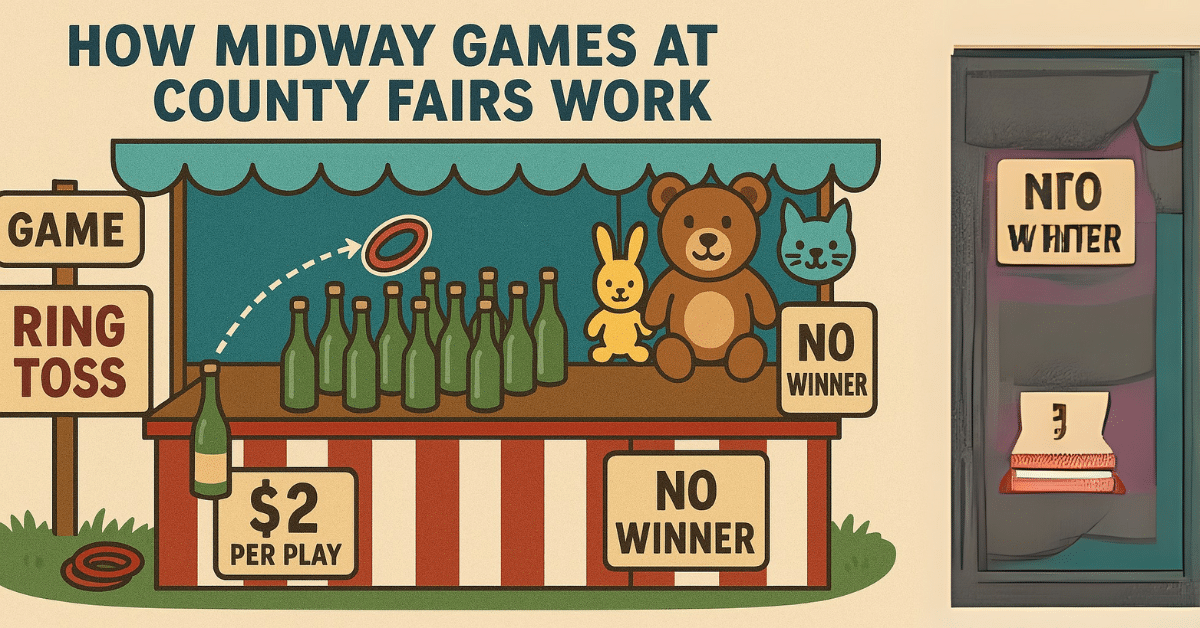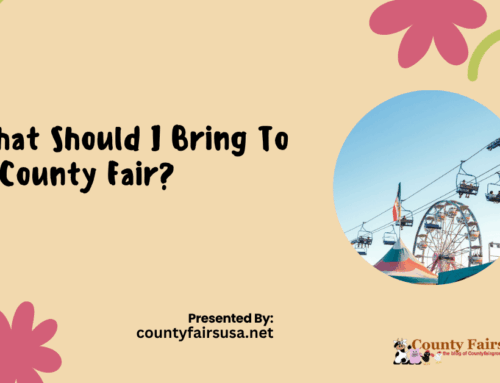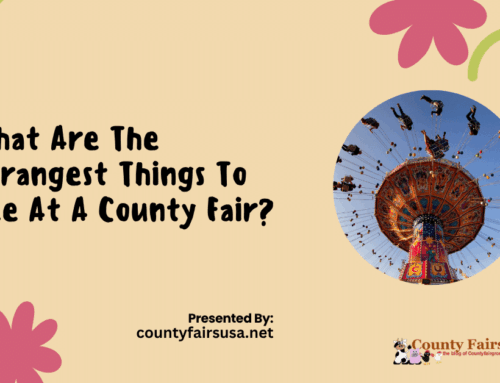The county fair is a place where summer memories are made—where the scent of popcorn mixes with the sound of laughter, and colorful lights guide you from one booth to the next. Among the food stands and ferris wheels lies the midway, an energetic strip filled with games that invite you to toss, shoot, pop, or balance your way to a stuffed prize. It’s easy to get caught up in the excitement, but have you ever stopped to wonder how these midway games actually work?
Whether you’re aiming for a giant plush animal or just want bragging rights, there’s more going on behind the booth than meets the eye. From design tactics to game psychology, this article breaks down how midway games function, why winning often feels just out of reach, and what you can do to tilt the odds a little more in your favor.
What Exactly Are Midway Games?
The term “midway” dates back to the 1893 World’s Columbian Exposition in Chicago, where the Midway Plaisance was a designated area for amusements, games, and shows. Since then, “midway” has become synonymous with fairground attractions.
Midway games are the booths lined up between the food stands and the thrill rides. They offer a chance to interact, compete, and win prizes. Some of the classics include:
- Ring toss
- Balloon darts
- Basketball shooting
- Water gun races
- Milk bottle knockdown
- Ladder climbs
Each game seems simple enough. But under that surface lies a web of design choices that make things a little more complicated than they first appear.
The Psychology of the Midway
The moment you step onto the midway, you’re pulled in by a sensory overload. Loud music, vivid colors, blinking lights, and charismatic game operators shouting encouragement—it’s all carefully constructed to hold your attention.
Midway games tap into some basic psychological principles:
- Reward anticipation: Seeing someone win or imagining yourself carrying away a giant teddy bear triggers the brain’s reward system.
- Sunk cost fallacy: If you’ve already spent $5, spending a few more feels like the only way not to waste your original investment.
- Social proof: Watching other people try makes it seem like success is within reach—even if it’s not.
The idea isn’t to trick you—but rather to make the experience more exciting. It’s not just about the prize, it’s about the thrill of trying.
Skill vs. Chance: What Kind of Game Are You Playing?
Fair games generally fall into two categories: games of skill and games of chance.
Skill-Based Games
These are games that can be won with practice, coordination, and a steady hand. Examples include:
- Basketball shot: Seems simple, but the balls are often underinflated and the rims are smaller or slightly oval.
- Water gun race: Everyone lines up and shoots water at a target. First to fill their marker wins.
- Ladder climb: You have to climb a suspended, rotating ladder and ring a bell at the top without flipping over.
While skill-based games can be beaten, they’re often modified to make success more difficult than expected.
Chance-Based Games
These rely mostly on luck, with very little influence from the player. Examples include:
- Duck pond: Pick a rubber duck and see if there’s a prize written underneath.
- Wheel spin: A giant wheel with numbers or colors, where prizes are awarded randomly.
- Ball-in-cup toss: The cups may be different sizes, or the winning cup may be tucked in the middle.
The rules might be fair, but the odds are often tilted heavily in favor of the operator.
How the Odds Are Designed
While most games are not rigged in the illegal sense, they are designed with margins in mind. After all, game operators are running a business.
Here’s how they create a setup where winning is possible, but uncommon:
- Visual deception: Milk bottles may look standard but are weighted at the bottom, making them harder to knock down.
- Equipment manipulation: Basketball hoops can be set higher than regulation and made of stiff metal with no give, causing bounce-outs.
- Prize illusions: The huge stuffed animal on display often requires multiple wins or a specific game level.
The house always has an advantage—it just wears a friendly smile.
Are Midway Games Rigged?
It’s a fair question (no pun intended). In general, most games are not “rigged” in a fraudulent way. Fairs in the U.S. are regulated by state or county authorities, and outright cheating can lead to major fines or getting banned.
However, the line between difficulty and unfairness can get blurry. Some subtle tactics include:
- Demonstration deception: Operators show how “easy” it is using modified balls or standing closer than allowed.
- Framing confidence: They might encourage players by saying “You almost had it!” to nudge you into another try.
- Changing difficulty: They can adjust how tightly a balloon is inflated or which bottles go on top.
So while not technically rigged, the challenge is often more about perception than raw odds.
Common Techniques Operators Use to Make Games Tricky
Here are a few behind-the-scenes methods that fair game operators use to make games more challenging:
- Using non-standard equipment: Heavier balls, smaller rims, or springy surfaces
- Controlling visibility: Dim lighting or backlighting to throw off depth perception
- Selective prize exposure: Displaying the biggest prizes most prominently even if they’re not realistically winnable
These adjustments don’t make the game impossible—but they shift the odds.
How the Prize System Works
Have you ever wondered how these booths can afford to give out giant stuffed toys?
Here’s a simplified breakdown:
- Tiered system: You may win a small prize after one win, a medium prize after two, and a large prize after three. Often, you’re encouraged to “trade up” by continuing to play.
- Low cost, high perceived value: Most plush toys are purchased in bulk and cost less than $5 wholesale.
- Prize rotation: Older or less popular items are offered as consolation prizes to create the impression of winning.
In short, prizes are part of the business model. They’re factored into the pricing and the odds.
Tips to Improve Your Chances of Winning
While there’s no guaranteed way to walk out with a prize, here are a few smart strategies to keep in mind:
- Watch before you play – See if others are winning. Observe how the game works.
- Ask questions – Inquire about rules, prize levels, and what’s considered a win.
- Stick to skill games – Your performance matters more than luck.
- Aim for fair booths – Operators with a line of players and occasional winners are more trustworthy.
- Don’t chase losses – Know when to walk away.
These small observations can help you play smarter—not just harder.
Cultural Significance of Midway Games
Beyond the games themselves, midway booths hold a special place in American tradition. They bring families together, give teens a place to show off, and allow fairgoers to feel a moment of excitement beyond the rides.
From Hollywood movies to vintage postcards, midway games have long been symbols of innocence, risk, and playful competition. They’re less about what you win and more about the memories you make trying.
Conclusion
So, how do midway games at county fairs work? They’re part engineering, part psychology, and a whole lot of showmanship. Whether it’s a game of skill or chance, each booth is carefully constructed to entertain, challenge, and keep you coming back for more.
Next time you’re tempted by the ring toss or balloon darts, you’ll know what’s really going on behind the curtain—and maybe, just maybe, you’ll walk away with that oversized panda.







Leave A Comment